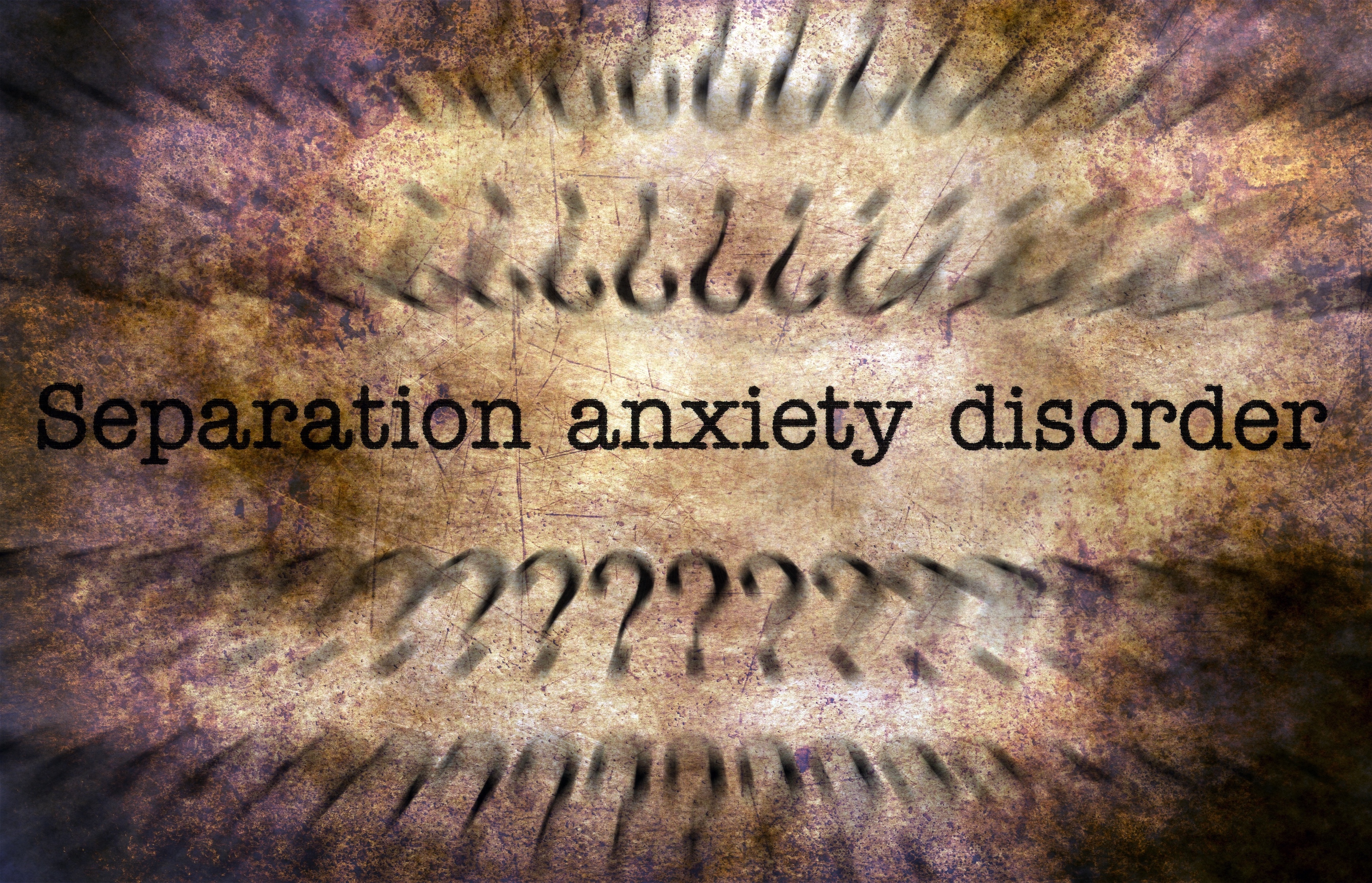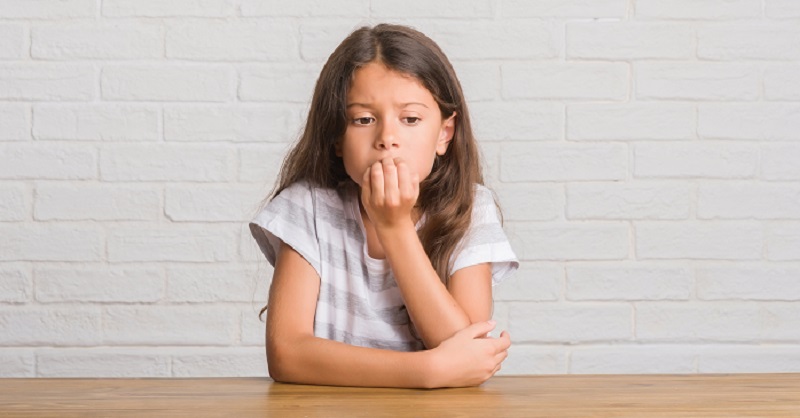Separation Anxiety Disorder
Are you worried about separation anxiety disorder in a child or adolescent? Susana wonders if her 4 year old daughter, Sara, suffers from this disorder. When she tries to leave her at the day care each morning, Sara cries, she screams and she clings to Susana. When the daycare teachers attempt to restrain her, Sarah clutches at her mother and begs to go with her. This has been going on for several weeks and Susana is beside herself. She doesn’t know how to help ease her daughter’s distress.

What is a Separation Anxiety Disorder?
Although it is normal for young children, especially in new or unfamiliar situations, to feel upset when separated from their primary care givers, such as parents or immediate family members, the extreme, ongoing upset that Sara exhibits may signal the presence of a Separation Anxiety Disorder. Children who suffer from a separation anxiety disorder experience high levels of anxiety when they either fear or experience separation from an important attachment figure. The excessive levels of anxiety that these children exhibit far exceed what is normal for their developmental stage.
What are the Signs and Symptoms of Separation Anxiety Disorder?
To meet the criteria for a Separation Anxiety Disorder the child must be less than 18 years of age and demonstrate 3 or more of the following behaviours on an ongoing basis for four weeks or more:
- Repeated feelings of distress when separated from attachment figures.
- Constant worries that an attachment figure will be harmed or lost.
- Frequent worries that he or she will be lost or kidnapped, resulting in separation from attachment figures.
- Refusal to go to school or other places for fear of being separated from the attachment figure.
- Fear of being alone at home or away from home without the attachment figure.
- Refusal or failure to fall asleep without the attachment figure nearby.
- Nightmares about being lost or separated from an attachment figure.
- Repeated complaints about being physically ill when the child is separated or anticipates separation from an attachment figure.
These fears and worries about being separated from an attachment figure cause a significant amount of distress and interfere with the child's ability to cope successfully in major developmental areas, including the social and academic domains.
What Causes a Separation Anxiety Disorder?
Like most mental health disorders, it is believed that Separation Anxiety Disorder is caused by an interaction of genetic and environmental vulnerabilities rather than any single, specific cause. Some of the risk factors include:
- An insecure attachment relationship.
- Major losses of important people through death or divorce or some other form of separation
- Major life changes such as moving to a new home or a new school.
- A family history of anxiety.
- Stress in the family (e.g. separation/divorce or death of a close family member).
- A scary or traumatic event that the child experiences(e.g. a car accident), or trauma of a more ongoing nature.
- A traumatic event that the child hears about (e.g. the abduction of a child).
How to Help

When a child suffers from anxiety around separation, whether his or her behaviours meet the criteria for a Separation Anxiety Disorder or not, the following suggestions can help:
- Anticipate when your child will need to face new experiences, and take steps to ease the transition. When possible introduce your child to new situations slowly and gradually. Try to avoid leaving your child alone in the new situation before this gradual introduction.
- Role play with your child using small toys to act out situations that normally trigger excessive levels of separation anxiety. Your child can use these toys to role play positive coping behaviours to deal with separation from an attachment figure, such as hugging a parent good-by and reminding the parent what enjoyable things he or she will do during the day/separation and when and where he or she meet the parent following the separation. The child could also do the same by drawing pictures of the before, during and after period of the separation, with a focus on anticipating positive scenarios throughout.
- Do not reward your child for his or her anxious behaviours by providing him or her with excessive attention and coddling.
- Teaching the child relaxation techniques and positive self-talk can also help.
- Be empathetic with your child when he or she is feeling anxious about being separated from someone important. Show that you understand and accept your child's feelings. Avoid making your child feel bad about being anxious.
- It may also be helpful to notify teachers of significant changes in a child's life and to follow through with your time commitments: for example, pick up your child or return home on time.
- Provide a transition object to ease the separation. For example, allow the child to bring a favourite object of hers or his, or even a picture of the attachment figure that he or she can keep during the situation that causes him or her distress.
- If your child is old enough problem solve with him or her to develop solutions to ameliorate separation anxiety and reduce the stress of the situation.
- A "goodbye" routine, such as a special wave through the window could also help.
- Exhibit a calm, positive attitude. Children are sensitive to their parents' moods and may take on your anxiety.
- Let your child know when you are leaving, when you will return, and then go. Don't delay, try to placate your child or repeat your goodbyes.
- Acknowledge your child's feelings. Validate and let your child know that you understand his or her feelings. Reassure him or her that you’ll return. Rather than reprimanding the child for acting silly or making a fuss about nothing, tell the child you know he or she is feeling upset and that you will miss him or her too.
- Read stories and remind your child of successful accomplishments around separation, or situations where he or she has shown improvement. Access children's books that incorporate the theme of separation anxiety through your library, bookstore or on the web. Share these with your child.
- Meet commitments to your child, especially time commitments. For example, pick up a child or return home when you state that you will.
- Manage your feelings of guilt. Watch for signs that your child is learning to manipulate you when you feel guilty and take steps to prevent this from going any further.
If your child continues to show separation anxiety after two weeks in a new situation, reconsider the arrangements. Perhaps the situation is unworkable, and it would be better to try something else.
Treatment Options

Seek professional support if the problem persists and you are unable to work with your child to reduce his anxiety around separation from an attachment figure. Treatment options may include:
- Psychological Testing
- Individual counselling
- Family counselling
- Parent skills training
- Cognitive Behavioural Techniques
- Behaviour Modification
- Enhancement of the Attachment Relationship (e.g. encouragement of Parenting Behaviours that will help build a more secure attachment style in the child).
Contact Dr. O'Connor about a Separation Anxiety Disorder or another child problem that worries you.
Learn more about Separation Anxiety Disorder.
Resources Used in This Article
- Diagnostic and Statistical Manual of mental Disorders (DSM-V)